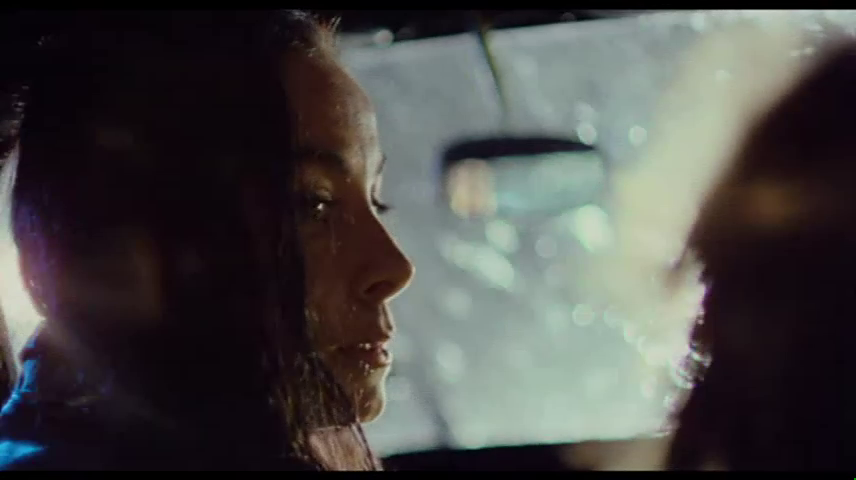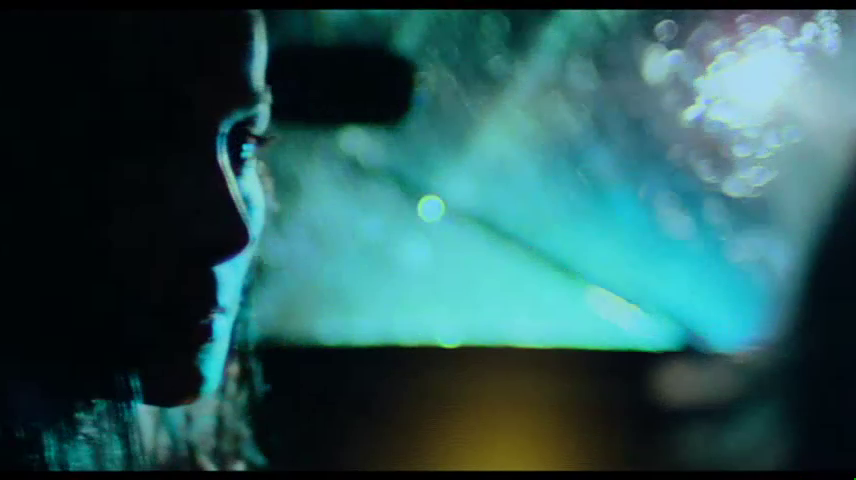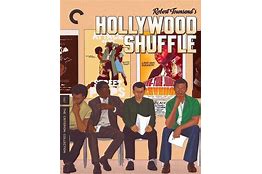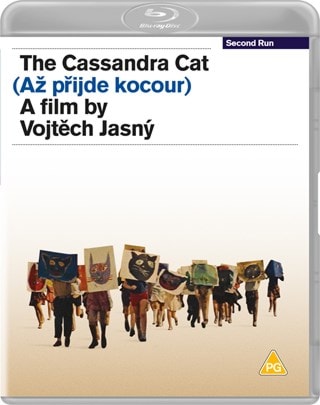From the Spring 2023 Cinema Scope.
Who could it be at Vinegar Syndrome Films in the U.S. and/or Powerhouse Films in the U.K. who decided I was an aficionado of Mexican and/or Canadian wrestling? I haven’t been able to discover if Vinegar Syndrome and Powerhouse are distantly or closely related to one another—or if, on the contrary, separate publicists at each company arrived independently at the notion that I was an actual or potential wrestling buff. But the fact remains that unrequested check discs of Santo vs. Evil Brain and Santo vs. Infernal Men (both 1961) along with two more unrequested check discs devoted to an Italian Western with an equally unidiomatic, pidgin-English title (The Big Gundown, 1966), all from Powerhouse, turned up in my mailbox early this year, and these were soon followed by a finished Blu-Ray wrapped in cellophane of the no less unrequested and undesired Hitman Hart: Wrestling with Shadows, a 1998 Canadian documentary from Vinegar Syndrome.
Even if I accept the more probable and less paranoid explanation that much of our planet is currently undergoing a collective nervous breakdown over identity politics, leading to many mistaken surmises and false assumptions that each of us is making about the identities and interests of everyone else, I can’t fathom what might have inaugurated this trend in “restored” digital releases. Maybe all our fighting with one another —or else pretending to fight, as in wrestling—is what inspired it.
Another version of the same kind of identity politics—the political correctness of individuals reduced to fighting over labels and symbols, usually after failing to change the conditions, people, and/or things being labeled or symbolized—seems to be behind the sort of cultural self-censorship that has lately overtaken Criterion, a label that I’m delighted to report sends me virtually all its new releases, even if I’m occasionally less delighted by what they send (and in some cases what they don’t pick up and release). And I’ve been happy to remain a paid subscriber to the Criterion Channel, which has sufficiently expanded their offerings in recent months to make this resource one of my favourite movie sites, along with YouTube and MUBI. (Thanks to this channel, it’s finally possible to see all of Kiarostami’s Kanun shorts, just for starters.)
But it’s a limitation of Criterion’s status as a canonizer that its selections are inevitably the results of business decisions, even if, as with Library of America titles and Oscar winners, these are commonly granted the prestige of official cultural pronouncements from Mount Olympus by the general public. Much of this is the public’s fault, the result of a certain mental laziness encouraged by a lousy educational system, but some of it also seems to come from Criterion dutifully striving to toe the line when it comes to certain PC reflexes. Even though I’m sure that PC can’t explain all of their recent curatorial decisions, I feel that some of it must be behind their recent selection of Michael Schultz’s uneven and formulaic first feature, Cooley High (1975), over his far more inventive and resourceful Car Wash (1976), or their bringing out Robert Townsend’s lightweight Hollywood Shuffle (1987) while scooting past, for example, Charles Burnett’s politically incorrect but much more interesting and thoughtful The Glass Shield (1994) or invaluable cubist approach to Nat Turner, A Troublesome Property (2003).
As for Hollywood Shuffle, thanks to Criterion, I’ve just started watching it for what may well have been the first time—it’s hard to be certain now about a satirical comedy aimed at being timely in 1987 (and thus somewhat ephemeral afterwards, virtually by self-definition). I laughed at some of the pointed gags about the clichéd, stereotyped parts that black actors were expected to play in movies. But then when Townsend offered an even funnier segment with two hood brothers, Speed and Tyrone, doing their own versions of Siskel and Ebert, I suddenly realized that he had to make those brothers every bit as clichéd and as stereotyped as his ostensible targets if he wanted his gags to score. So I became a bit confused about where he actually stood regarding stereotypes. Turned into something historical, this satire becomes a more questionable piece of goods, even with an informative essay by Aisha Harris titled “Against Type” that seems to regard Speed and Tyrone as realistic countertypes rather than clichés.

Of course, it’s possible that I’m making wrong guesses and jumping to wrong conclusions about the various deliberations involved in these Criterion releases. As with any art-related activity, we can judge and define only effects, not intentions. But when it comes to Criterion’s refusal to bring out Orson Welles’ The Other Side of the Wind (2018), even though it reportedly has an exclusive contract with Netflix—with the consequence that no one else can commercially release a DVD or Blu-Ray of that film (which would allow us to see all of Welles’ own edit of the sex scene in the car, at least as an extra, rather than the shortened version arrived at by a committee)—I can’t help but conclude that the film’s spectacular and shameless political incorrectness supersedes any understanding that most of Welles’ films improve with age once we gradually learn how to adjust to them—a slow, wavering, and sometimes painful process that has taken us decades to unravel in the cases of The Lady from Shanghai (1947) and Touch of Evil (1958) and their shifting receptions.

In the case of the even more nightmarish The Trial (1962)—not yet on a DVD or Blu-Ray in North America, although I’ve just seen a 35mm print of the crisp Rialto restoration—we may still be hamstrung by the discrepancies between Welles’ guilt-ridden rewriting of Kafka in more Victorian and post-Holocaust terms, his switching genders on both permissive and demanding parents, and Kafka’s less puritanical form of political incorrectness and pre-Holocaust victimhood. Yet it does seem ironic that Welles and Oja Kodar’s politically incorrect autocritique of their own sexism in The Other Side of the Wind is apparently deemed inappropriate for thinking adults by Criterion while most of the remainder of the Welles oeuvre, sexism and all, with and without autocritiques, is currently being celebrated on the Criterion Channel.
I haven’t been in a rush to see any more Lars von Trier movies lately, but Criterion sending me its Blu-Ray box set devoted to the Europe trilogy that more or less launched his career—The Element of Crime (1984), Epidemic (1987), and Europa (1992)—goaded me into watching the first of these features for the first time as well as a lengthy interview with him where he dismisses his own Medea(1988), which pretended to be based on a Carl Dreyer screenplay. It’s a sensible dismissal—making me conclude, for once, that he can be a sensible man when he wants to.
And I must confess that for all my dislike of most of von Trier’s work, he’s far more talented and technically adventurous than a one-trick or two-trick pony like Quentin Tarantino, who keeps trotting out the same revenge scenarios and wishful historical rewrites to the same rounds of startled applause from the same fans who’ve conned themselves into forgetting the same circus tricks pulled on them the last time around. (The Coen brothers similarly fall back on the same cartoony gag about the dufus who accidentally shoots himself in the face as if this were a Golden Oldie.) And von Trier is far more ambitious when it comes to his alleged subject matter: while Tarantino is preoccupied mainly with mechanical genre conventions, the Danish piledriver turns out a trilogy named after a continent (his own), even if he can’t approach that subject in its post-fascist phase on any terms except for a few mechanical genre conventions such as serial killers. And what fascinates me most about Europa isn’t really its title subject but its juxtapositions of colour with black and white in the same shots. Speaking of which, the principal monotonous colour of The Element of Crime strikes my eyes as blazing orange red, but some reviews say it’s yellow and others opt for sepia. How much any of this impinges on what von Trier has to think or say about post-fascist Europe is negligible.
Both Tarantino and von Trier seem proud rather than ashamed of their compulsions to imitate other filmmakers by reducing their stylistic flourishes and effects to mannerisms. This is how and why von Trier’s Breaking the Waves (1996) features a suffering heroine required to imitate both Giulietta Masina in Federico Fellini’s La strada (1954) and Renée Falconetti in Carl Dreyer’s The Passion of Joan of Arc (1928), apparently under the belief that the styles, performances, and meanings of these radically different films are compatible enough to be mixed together. Similarly, von Trier has avowed that the style of The Element of Crime derives from both Andrei Tarkovsky and Welles’ Touch of Evil, as if the belief systems of those disparate sources, the mystical, open-air pantheism of the former and the guilt-ridden, claustrophobic liberalism of the latter, could be gracefully joined at the hip. In both cases, one person’s stylistic conviction becomes converted into another person’s nihilistic mannerism by being tossed into the same boiling and overflowing postmodern stew.
In his essay on the Europe trilogy for Criterion, Howard Hampton becomes at times almost von Trier’s literary successor by reducing (or is it elevating?) Europe and Europe alike to a heady string of cultural references. When he parenthetically asks us “[H]ow many films can you think of that not only quote Finnegans Wake but earn it?”, I don’t know whether to thank him for this unexpected discovery, fault him for not divulging what this discovery is, or ask him what “earning” a quote from Finnegans Wake consists of and counts for, theoretically or actually. But all these possibilities get swiftly swept under the carpet to make room for more cultural references: “Epidemic…arrives at a multilayered eruption that obliterates the line between The Passion of Joan of Arc and Night of the Living Dead.” [Surely more than a line separates these pictures. But by all means let’s switch channels before anyone can ponder whatever that line might be.] “This is as devastating an ending as horror has produced and an existential joke for eternity.” So are we expected to scream, vomit, laugh with philosophical knowingness at the existential joke, or some ambitious and ambiguous combination of all three? And if so, why? Von Trier has more modestly claimed that he wants it to function like a pebble in one’s shoe, but he doesn’t bother to explain why or how this pebble is supposed to matter. A genuine (and genuinely tragic) philosophical parable such as Truffaut’s L’enfant sauvage (The Wild Child) (1970), for instance,offers the vexing pebble of suggesting how much the acquisition of language is a grievous loss rather than a welcome gain. But does anything that we might think or feel about von Trier’s pebble really matter all that much, except as a free-floating jolt? Not necessarily, it would seem, because in the next paragraph we find von Trier “ingeniously reversing Franz Kafka’s Amerika in postwar Germany” (without Kafka’s prose style or any of his motivations) and find Barbara Sukowa “channeling Hanna Schygulla channeling Marlene Dietrich” (presumably without the visual styles of Fassbinder or Sternberg and for no particular reason apart from von Trier’s desire for Sukowa to channel them). Moreover, “Europa’s back-projected German wasteland evokes Notorious and The Third Man—corruption filtered through the lens of entertainment,” thereby skirting reality (both theirs and ours) for more weird effects, which are apparently most of what’s desired from these transactions. Yet some of these maneuvers are filmed by Henning Bentsen, who also shot Dreyer’s Ordet (1955) and Gertrud (1964).
Hampton, to his credit, wrestles with some of the problematic results and ghastly moral odors of all this scattershot experimental cuisine, but grappling seriously with these results also inevitably involves some version of duplicating them. So I guess my best recommendation would be to hold your nose before you even think of diving in.
***
Maggie Hennefeld and Laura Horak, two of the editors of the 2019 collection Unwatchable (a book that allowed me to air more of my gripes against von Trier), have joined forces with Elif Rongen-Kaynak to produce a four-disc Blu-Ray/DVD set called Cinema’s First Nasty Women, focusing on the period of a little over a century ago when women seem to have had the most sizable input on film culture.Kino Lorber couldn’t send me this physical set in time for my deadline, but links to the films and the 112-page booklet give me plenty of wild stuff to chew on, including the following summary from the latter:
“Discs 1 and 2 center on early slapstick comedies from 1898 from across Europe, the US, and the UK. In Disc 1, ‘Disastrous Domestics & Anarchic Tomboys,’ vengeful kitchen maids and rambunctious teenagers conspire to leave the domestic sphere in total shambles. This disc spotlights the forgotten films of France’s Léontine, Italy’s Lea, and catastrophes both in and out of the kitchen. Disc 2, ‘Queens of Destruction,’ features three popular French comedienne characters, Cunégonde (Little Chrysia), Rosalie and Pétronille (both played by Sarah Duhamel), as well as a curated section on “Tyranny at Home.” Discs 3 and 4 pivot from burlesque slapstick to cross-dressing and queer erotics. Disc 3, ‘Gender Rebels’ explores the porousness of gender from cross-dressing girl spies to the gender hijinks of the Wild West. This disc includes three surviving films from writer/director/actor Gene Gauntier’s girl spy series and the best of Edna “Billy” Foster’s work at Biograph. In Disc 4, ‘Female Tricksters,” cross-dressing provides myriad opportunities for accidental same-sex attraction, and women don male attire to brave the mean streets of the early 20th-century metropolis. In the set’s only two feature films, Evelyn Greeley moonlights as both Sapphic dancer and male Latin professor in Phil for Short (1919), while theater star Mabel Taliaferro plays a headstrong society girl who disguises herself as a boy to trick a “woman-hating” French trapper in the frontier BDSM fantasy, The Snowbird (1916).”
The emphasis here, contra von Trier and the Movie Brats, is on stuff that hasn’t already been digitally available.
Finally, on another upbeat note, Second Run Features in the U.K. has released on Blu-Ray a restoration of one of the most exuberant movies of the Czech New Wave, Vojtěch Jasný’s The Cassandra Cat (1963). I hope I can be forgiven for revising and excerpting my 1991 capsule review of this nugget:
“[L]ong banned because of its satirical and antiauthoritarian tendencies, this fantasy in ‘Scope and colour…describes what happens when a magic show featuring a cat with a pair of eyeglasses turns up in a fairy-tale town. When the eyeglasses are removed, people are obliged to show their ‘true colors’—folks in love turn red, liars purple, thieves gray, betrayers yellow, and the local kids see through the duplicity of the adults for the first time. To complicate matters, the magic show and cat are described in advance by a salty local layabout (Jan Werich) who serves as a sort of narrative equivalent to the stage manager in Our Town and who entertains the schoolchildren with his tales while serving as their art-class model; when the magic show and cat arrive in the town, the magician is played by the same actor. Whimsical, likable, and inventive, if never wholly successful, this colorful cross between ‘The Pied Piper’ and a radicalized Bye Bye Birdie (coincidentally released the same year) qualifies as one of the best early examples of the Czech New Wave; significantly, Ivan Passer worked on it as a second unit director. Also known as That Cat… and One Day a Cat.”





